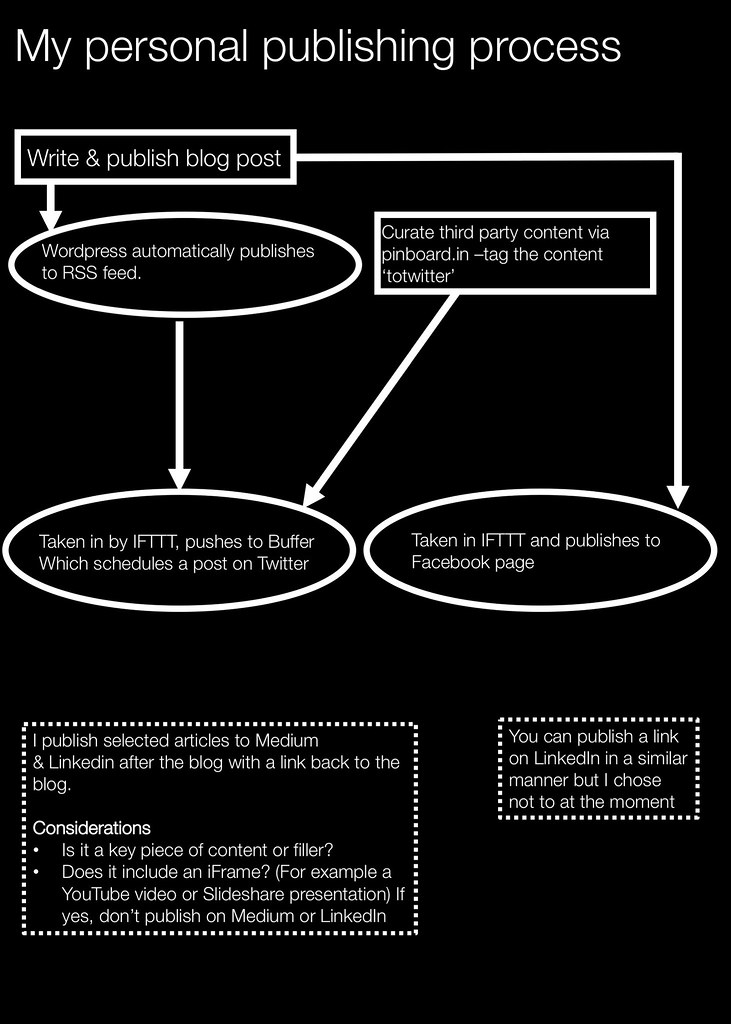1 minutes estimated reading time
Ketchum’s David Gallagher wanted to know whether he should have his own website as part of managing his personal online brand? He initially felt that publishing on Facebook and LinkedIn was enough. There was also discussion around platforms like Medium. None of which give you real control over your content. Wadds like me felt that owning your own platform was important.
Why have a website as part of your personal online brand?
- LinkedIn and Facebook don’t have the same agenda as you. Your content becomes a hostage to their business whims
- It is hard for users to discover your content, Facebook and Google make it so
- Even on Medium you no longer really own your content. It can’t be easily exported like content on the Blogger platform
- Even in the world of Facebook, Google is still a reputation engine
So show do you manage the process?
You need to find a system that works for you. Here is what mine looks like for social syndication.

IFTTT – if then, then that. A service that allows you to trigger actions based on pre-created inputs. It allows rules to be built up based around different inputs:
- A new post via RSS
- A favorited tweet
- A photograph tagged with a particular label or hashtag
It supports numerous services including Flickr photography and pinboard.in
Buffer – buffer is a social publishing tool. I have pre-scheduled slots. It is also compatible with publishing posts sent via IFTTT.
Pinboard.in – pinboard is a way of storing your bookmarks with notes and tags online rather than on your computer. Your bookmarks then become accessible wherever you are. It is handy to be able to search things that you have found previously. Google seems to have moved away from organising all the world’s information to mainly focus on ‘now’ content. Pinboard helps you get around this.